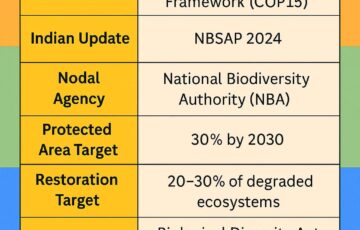The Ancient Monuments and Archaeological Sites and Remains (Amendment) Act, 2010
Government policies and interventions for development in various sectors and issues arising out of their design and implementation.
Why in the News?
According to the Ministry of Culture, Uttar Pradesh has the largest number of Centrally Protected Monuments which have been encroached upon, closely followed by Tamil Nadu.
Background:
- The Ancient Monuments and Archaeological Sites and Remains (AMASR) Act, 1958 is one of the landmark laws for the –
- Preservation of ancient and historical monuments and archaeological sites and remains of national importance (over 100 years old).
- Regulation of archaeological excavations and
- Protection of sculptures, carvings and other like objects.
- Under the guidelines of this legislation, the Archaeological Survey of India (ASI) conducts its operations.
- There are 3,695 Centrally Protected Monuments or Sites in India that are all under the ASI’s care.
- The ASI personnel regularly visit the monuments to evaluate their current condition, and as necessary, the conservation and preservation work is undertaken.
2010 Amendment:
- The AMASR Act of 1958 was revised in 2010 to reinforce its criminal sanctions and stop widespread encroachments and unauthorised development close to monuments.
- The amendments’ primary characteristics are:
- The establishment of a Regulated area, 200 metres beyond the Prohibited area, where any construction requires approval from a newly established National Monuments Authority, and a Prohibited area, 100 metres around every National Monument, where no construction, public or private, is permitted.
- The Act also suggested that heritage by-laws for each monument be created by an expert body given the distinctiveness of each site.
- Additional changes are being considered that would eliminate the prohibition on building within 100 metres of an ASI-protected monument and instead control building between 100 and 200 metres.
Concerns: The central and state governments’ public works projects near the monuments are disturbing the area’s cultural or environmental assets.
Future: Governments should strive for development that has the fewest negative effects possible on the environment and cultural assets.
Conclusion: Development shouldn’t be done at the expense of our cultural or environmental heritage because India has significant unrealized tourism potential.
Mains:
- Examine why historians and archaeologists have expressed concern over amendments proposed to the Ancient Monuments and Archaeological Sites and Remains Act (1958).








